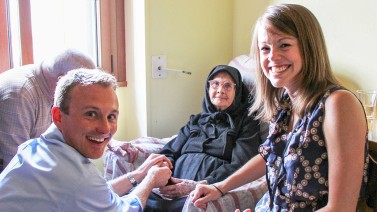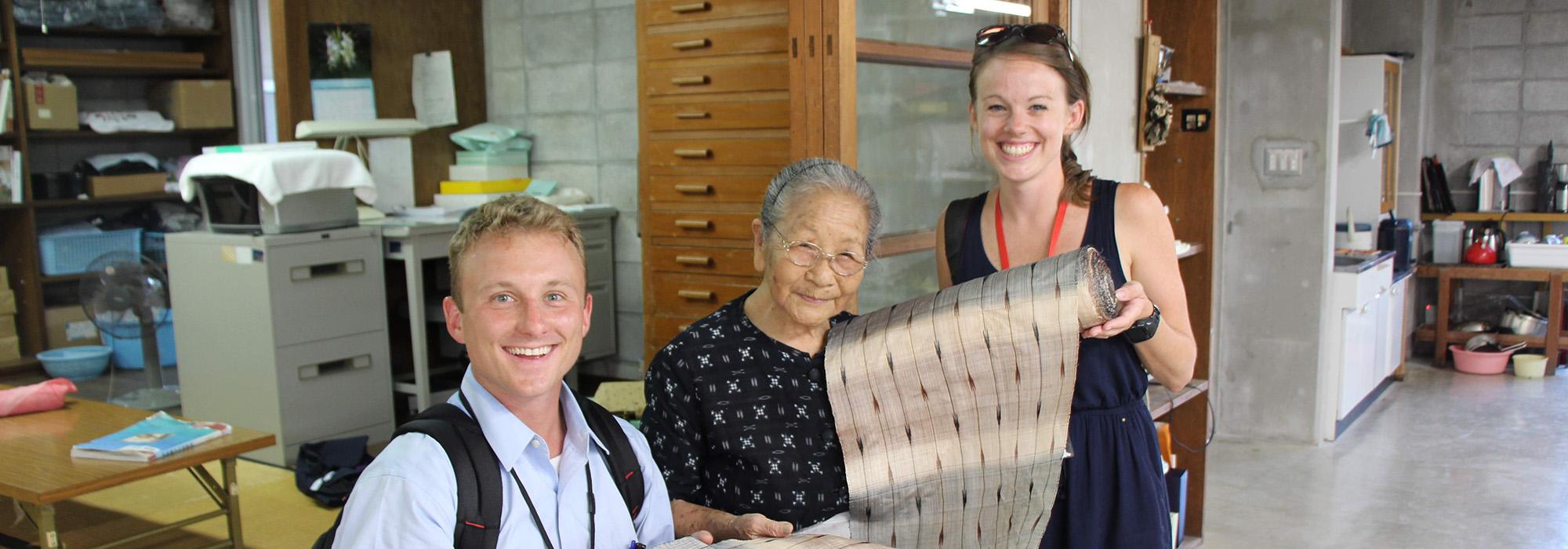It Takes One: Asa Eslocker and Harriett Jameson

Harriett Jameson and Asa Eslocker are the two filmmakers behind the documentary Landscapes of Longevity, which premiered at the 2014 Virginia Film Festival and won the 2015 Student Award of Excellence in communications from the American Society of Landscape Architects (ASLA). The film explores how certain vernacular landscapes—those of the so-called “blue zones” where the world’s longest-lived people are concentrated—foster longer, healthier lives. The researchers now want to collaborate to transform the project into a book.
Can you briefly describe the Landscapes of Longevity project?
Asa & Harriett: Landscapes of Longevity is a documentary film that investigates three landscapes of extraordinarily high life-expectancy—Sardinia, Italy; Okinawa, Japan; and Loma Linda, California—through the narratives of the healthy seniors in these unique cultural landscapes. The film primarily asks what we can learn by studying the characteristics of cultural landscapes with extraordinarily high life expectancy and quality of life. With over 70 million Americans retiring in the next decade, it is essential for landscape architects to explore how we can more effectively design our communities to engender healthy aging. The evolution of U.S. urban planning and automobile-centric building practices have had dire health consequences on the U.S. population, creating a distinctly American “obesogenic environment.”
How did you become involved in the project?
Harriett & Asa: We were partners on a few studio projects during our graduate work in the landscape architecture program at the University of Virginia. Winning the competitive Howland Traveling Fellowship was the first catalyst for the project, providing the initial funding for traveling around the world to help this small idea blossom into a full-length documentary film. The project began with a desire to explore the impact of our everyday cultural landscapes on health and well-being. We knew about the “blue zone” locations and that many longevity scientists and demographers were studying the DNA, diets, and other biological factors from these long-living populations. However, no one had ever examined or studied the impact of place, space, daily routines, or landscapes on health and aging in those communities. After winning the Howland Fellowship, we were fortunate to secure other funding and support.



